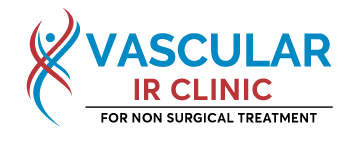What are varicose veins?
Generally, varicose veins are the result of abnormal blood flow. The veins in the body bring back blood to the heart and lungs from the tissues to obtain oxygen. Blood will flow in sick veins the wrong way. This is especially true in the legs, where blood must be restored to fight against gravity. The effect is enlarged veins that are uncomfortable and unsightly. Generally, these grow and deteriorate as we age.
Who is most at risk for developing varicose veins?
Women are more likely than men to have them. It relates especially to women who have had multiple children. There’s a genetic component as well. You are more likely to develop them yourself if you have close family members with varicose veins. Also in people whose work involves long standings sedentary lifestyle and obesity.
Can they be prevented?
The first line of treatment for varicose veins is varicose stockings/ socks that are loose at the feet and pinch the leg from the knee upwards, stopping blood from running the wrong way. We aren’t guaranteed to keep them from developing, though. Often proposed as a risk factor for varicose vein formation was being overweight.
Are there home remedies that work?
There are plenty of websites advertising many home remedies for varicose veins, but not much research is needed to back up most of these claims. While most home remedies are unlikely to be harmful, it is always best before you test them out to discuss them with your doctor before its late for the right treatment and develop complications.
Can varicose veins cause other medical complications?
Varicose veins are not just a cosmetic problem, they can cause considerable discomfort. Pain throbbing and itching around the varicose veins are the most common symptoms. Many people may experience swelling of the legs. In more severe cases, wounds can form, usually at ankle level, which due to changes in blood flow can be slow to heal. Blood clots that form in varicose veins, but they vary from clots in deeper veins that may travel to the heart and lungs. Varicose-related clots can lead to a painful inflammatory reaction but are rarely life-threatening.
What is the best treatment for varicose veins?
Stocks of compression can be very effective in helping to control varicose vein-related symptoms. However, many patients find it uncomfortable to wear stockings. For help treat varicose veins, there are several minimally invasive outpatient treatments:
Thermal ablation (laser or radiofrequency).
Extraction of the vein (phlebectomy).
Scar small veins injection of agents to cause them to dissolve (sclerotherapy).
What can I expect from treatment?
All of these procedures are minimally invasive, IV line technique, requiring NO BLADE/NOCUT/ NOSUTURE/NO SCAR technique. Usually, patients can go home and can resume most of their daily activities within 24 hours. Nonetheless, most patients can get back to work the next day without the restriction of food or activities. For general, some patients may expect some mild pain for one to two weeks requiring a mild pain killer for a week or two at the most.
What are the benefits of having treatment in a hospital setting?
In the unlikely event of an adverse reaction to any of the medicines used during the procedures, patients will have quick access to any emergency medical care they may need in a hospital setting.
What happens if you don’t treat varicose veins?
When symptomatic varicose veins are left untreated, they can lead to severe complications such as rashes, infections, bleeding, sores and blood clots.
Normally, if left untreated, varicose veins allow excess blood to spill into the leg tissue. If portions of their skin are dark and discoloured, the patient may feel painful swelling and inflammation. This disorder is referred to as hyperpigmentation, chronic non-healing ulcers.
